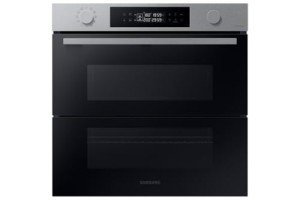The Comprehensive Guide to Built-In Cookers and Hobs
Built-in cookers and hobs have actually ended up being increasingly popular in contemporary kitchen areas, providing both functionality and visual appeal. These integrated appliances, developed to fit effortlessly into kitchen cabinets, optimize space while boosting the cooking experience. This article will explore the various kinds of built-in cookers and hobs, their advantages, maintenance suggestions, and often asked concerns.
Comprehending Built-In Cookers and Hobs
Built-in cookers usually include ovens, while hobs describe the cooking surface area that can integrate various heating elements such as gas burners, electric coils, or induction zones. When integrated, these two appliances develop an efficient and streamlined cooking setup.
Types of Built-In Cookers and Hobs
When choosing a built-in cooker and hob, it's necessary to understand the numerous types readily available. Here's a detailed table comparing the main types:
| Type | Description | Pros | Cons |
|---|---|---|---|
| Gas Hob | Utilizes gas as a fuel source. | Quick heat change, culinary control. | Needs gas line installation. |
| Electric Hob | Utilizes electric coils or solid plate heating. | Generally more economical, easy to clean. | Slower to heat and cool off. |
| Induction Hob | Utilizes electro-magnetic energy for cooking. | Fast heating, energy-efficient, safe. | Expensive, needs compatible cookware. |
| Built-In Oven | Can be electric, gas, or combination. | Versatile cooking alternatives, various sizes. | Repaired place, potential setup intricacy. |
Benefits of Built-In Cookers and Hobs
- Space-Saving Design: Built-in systems conserve area by incorporating flawlessly into the kitchen layout, leaving more room for storage and countertops.
- Visual Appeal: They provide a streamlined and contemporary appearance, elevating the design of any kitchen.
- Personalization: With numerous styles and configurations, property owners can select appliances that best suit their cooking routines and kitchen measurements.
- Boosted Functionality: Built-in cookers frequently include sophisticated features such as self-cleaning options, several cooking modes, and programmable timers.
- Safety Features: Modern hobs integrate functions like automated shut-off and child locks, boosting security in the kitchen.
Maintenance Tips for Built-In Cookers and Hobs
To guarantee the longevity and optimum efficiency of built-in cookers and hobs, correct upkeep is vital. Below are necessary maintenance ideas:
- Regular Cleaning: Wipe spills and stains instantly to prevent them from hardening or becoming more difficult to clean up.
- Use Appropriate Cleaning Supplies: Avoid abrasive materials that can scratch surfaces. Use cleaner specifically created for the kind of device you have.
- Examine Gas and Electrical Connections: Regular examinations can prevent leaks and make sure optimal performance.
- Adjust Temperature Settings: If you see inconsistencies in cooking temperature levels, consider recalibrating the oven.
- Arrange Professional Servicing: Annual check-ups can assist recognize and rectify small concerns before they intensify.
Picking the Right Built-In Cooker and Hob
When choosing a built-in cooker and hob, a number of elements must be considered:
1. Cooking Preferences:
- If you delight in fast temperature level modifications, a gas hob may be ideal.
- For energy performance and uniform cooking, induction hobs are preferred.
2. Kitchen Size:
- Consider the area available for installation. Step cabinets and other appliances to make sure the picked unit fits conveniently.
3. Design and style:
- Opt for styles that match your kitchen's décor. Built-in systems been available in different surfaces, such as stainless steel, black, or custom kitchen cabinetry.
4. Spending plan:
- Establish a budget plan that elements in purchase expenses, setup charges, and long-term operating expenditures.
5. Brand name Reputation:
- Research reliable brand names known for dependability and customer support. Checking out reviews and seeking recommendations can also be useful.
Often Asked Questions (FAQs)
Q1: Are built-in cookers and hobs more pricey than conventional systems?A1: Generally, built-in cookers and hobs can be more costly upfront due to installation and style. However, they might offer long-term cost savings through energy efficiency.
Q2: Can I install a built-in cooker or hob myself?A2: While some might be installed by house owners, it is typically advised to work with a professional, specifically for gas or complex electrical connections, to ensure security and compliance with local codes.
Q3: What is the average life-span of built-in cookers and hobs?A3: With correct care, built-in cookers and hobs can last anywhere from 10 to 15 years. Routine maintenance can extend their life.
Q4: Is it possible to integrate various kinds of hobs with the same oven?A4: Yes, lots of cooking areas feature a mix of hobs (e.g., gas and induction) alongside a built-in oven, allowing for flexible cooking choices.
Q5: How do I know if my hob is energy-efficient?A5: Look for energy efficiency ratings and think about induction hobs, which normally provide exceptional energy efficiency compared to gas or traditional electric hobs.
Built-in cookers and hobs offer a blend of modern-day design and advanced cooking innovation, improving any kitchen's functionality and style. By understanding the various types offered, their benefits, and upkeep needs, house owners can make educated choices when buying these necessary kitchen appliances. With integrated gas oven and hob packages and care, built-in cookers and hobs can offer years of enjoyable cooking and a seamless kitchen experience.

